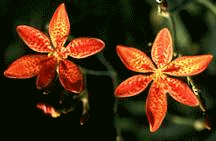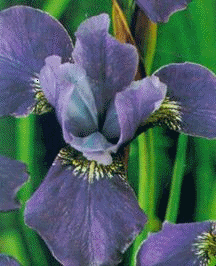|
Handling Cut Flowers Perennials for Cut Flowers Belamcanda chinensis -Blackberry Lily Cutting
in the Garden Timing is important when cutting. Plants contain the most vigor in the morning. Flowers in loose bud are ideal to harvest because their "show" is yet to begin. Dahlias, zinnias and marigolds will not continue to bloom if cut when the bud is very tight. The longer the stem the better when cutting. Exclusions to this rule include bulbs which need the green stems to photosynthesize and store energy for the dormant season. Leave approximately one third of the stem on bulbs. Strip the bottom third of all stems to eliminate transpiring leaves and prickly thorns. Submerge the stems in tepid water as soon as they are wounded. Dividing small stems from large stems helps organize the material for further work. Conditioning Stems Once all the gathering in the garden is finished, the stems will need to be re-cut under tepid water before arranging to eliminate any air pockets. Preservatives and color can be added during this process.
Direct sunlight and high temperatures will decrease the longevity of the cut stems. Nutrients added to the water will help extend the life of the cut flowers. Packets are available in stores for purchase or a solution can be made at home with a few drops of bleach and a teaspoon of sugar. This boosts the acidity of the water and helps prevent bacteria. Check the water every day or so and replace all of the water if necessary. Cutting Flowers http://www.ipm.iastate.edu/ipm/hortnews/1992/7-22-1992/cutflow.html Conditioning Cut Flowers http://www.ipm.iastate.edu/ipm/hortnews/1993/8-11-1993/cut.html Field Grown Annuals for Cut Flowers http://www.umass.edu/umext/programs/agro/floriculture/floral_facts/anncut.htm Insect Problems in Commercial Production of Outdoor Cut Flowers http://www.umass.edu/umext/programs/agro/floriculture/floral_facts/cutpest.htm |

 Treating
Cut Flowers
Treating
Cut Flowers